
Think Like an Engineer: Use Systematic Thinking to Solve Everyday Challenges & Unlock the Inherent Values in Them
by
Mushtak Al-Atabi
Published 26 Aug 2014
Living together in cities had a huge impact on the way civilisation evolved as it enabled the concentration of cognitive capital that led to the accumulation, growth and recording of knowledge, which was the basis for all future human development. 3. Invention of the Wheel (3500 BC) Although it is very difficult to imagine our world without wheels, there was a time when there were no wheels to go around. Transportation was very difficult and ineffective. Archaeological evidence supports that the wheel was first invented in Mesopotamia as well. As it is true for other technological evolutions, the invention of the wheel set humanity in motion in many ways. This paved the way to many future human developments and revolutions. 4. Scientific Revolution (1534-1700 AD) Although the idea of the printing press appeared in different parts of the world, the first use of a printing press to print books is attributed to Johannes Gutenberg, who used the printing press in 1450 AD to print copies of the Bible.
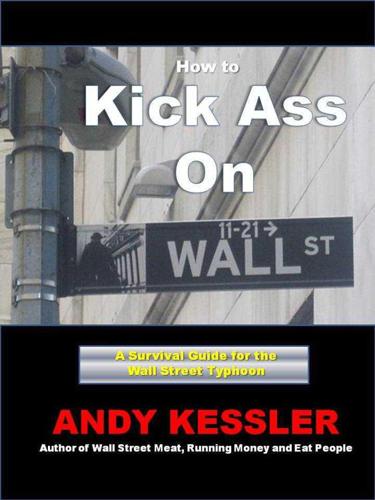
How to Kick Ass on Wall Street
by
Andy Kessler
Published 4 Jun 2012
Banks make bad loans. All the time. It used to happen more often, but the Federal Reserve and the FDIC now smooth out these cycles, often pushing problems down the road until they blow up into a full blown panic. Let’s go back to basics. Economies grow via savings, taking the profits going back to the invention of the wheel (or maybe the sale of that Eden apple) and reinvesting it in more and more productive businesses. You can’t invent capital by printing it - it can only come via profits and productivity. Wealth shows up in lots of places, not only in that new capital, but also in assets needed to create those profits, land, steam engines, tractors and yes, even homes workers live in for a shorter commute.

The Trouble With Billionaires
by
Linda McQuaig
Published 1 May 2013
One of the crucial ways that society assists individuals in their ability to generate wealth lies in the inheritance from previous generations. This inheritance from the past is so vast it is almost beyond calculation. It encompasses every aspect of what we know as a civilization and every bit of scientific and technological knowledge we make use of today, going all the way back to the beginning of human language and the invention of the wheel. Measured against this immense human cultural and technological inheritance, any additional marginal advance in today’s world – even the creation of a cable television sports network – inevitably pales in significance. The question then becomes this: who is the proper beneficiary of the wealth generated by innovations based on the massive inheritance from the past – the individual innovator who adapts some tiny aspect of this past inheritance to create a slightly new product, or society as a whole (that is, all of us)?
…
He made it, as a mere university student, by taking advantage of the technological inheritance provided by all those who had developed the Internet and, before that, the personal computer and, before that, the mainframe computer and, before that, the punched-card tabulating machine and, before that…all the way back to the invention of the wheel. It is estimated that about 90 per cent of any wealth generated today is due to this ‘knowledge inheritance’ of the past. If this sounds unlikely, imagine whether Zuckerberg could have created the Facebook empire if he had, say, been a student thirty years ago in the pre-Internet age, if he hadn’t attended college in the early 2000s, when computer advances had reached a certain stage of sophistication.
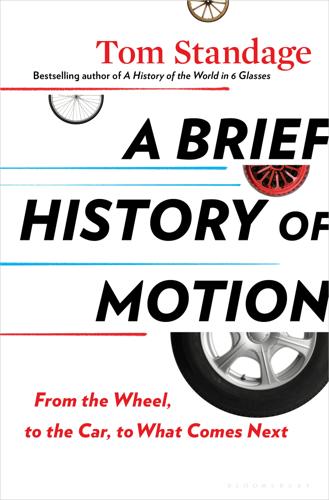
A Brief History of Motion: From the Wheel, to the Car, to What Comes Next
by
Tom Standage
Published 16 Aug 2021
And as we start to unpick the car from the fabric of modern life, it is helpful to see where and how it was woven in. 1 Wheels in the Ancient World Men’s fortunes are on a wheel, which in its turning suffers not the same man to prosper forever. —HERODOTUS A HISTORICAL TURNING POINT It all starts with the wheel. Today, in a world that has literally been built to accommodate wheeled vehicles, it is difficult to imagine life without them. The story of how such vehicles transformed the world begins around 3500 B.C.E., with the invention of the wheel. It is an idea whose power seems obvious in retrospect. Yet the notion that the wheel is the greatest invention in history is recent. Only in the past century or two, in a world that runs on wheels, has its usefulness become universally apparent. Wheeled vehicles faced a surprising amount of resistance.
…
The members of the Princess’s suite travelled in seven richly gilded coaches, each of which was drawn by six horses; the coachmen wore velvet suits with gold buttons. But this was hardly an everyday occurrence. By the year 1500 the majority of wheeled vehicles, in the parts of the world where they were still being used at all, were lowly two-wheeled agricultural carts. Five thousand years after the invention of the wheel, it was still not in widespread use. In North Africa and much of the Middle East it had been abandoned altogether; medieval Arabic and Persian do not even have words for wheeled vehicles, and travelers’ accounts as late as the eighteenth century remark on their total absence in the Arab world.
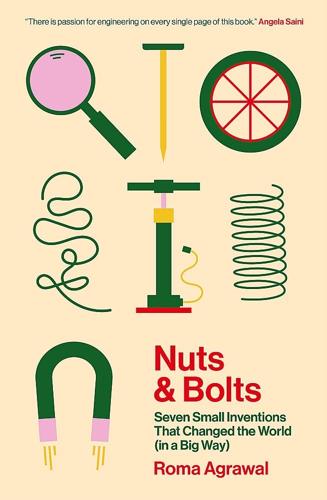
Nuts and Bolts: Seven Small Inventions That Changed the World (In a Big Way)
by
Roma Agrawal
Published 2 Mar 2023
https://www.bbc.com/news/world-europe-11593005. Belancic Glogovcan, Tanja. ‘World’s Oldest Wheel Found in Slovenia’. I Feel Slovenia, 6 January 2020. https://slovenia.si/art-and-cultural-heritage/worlds-oldest-wheel-found-in-slovenia/. Bellis, Mary. ‘The Invention of the Wheel’. ThoughtCo, 20 December 2020. https://www.thoughtco.com/the-invention-of-the-wheel-1992669. Berger, Michele W. ‘How the Appliance Boom Moved More Women into the Workforce’. Penn Today, 30 January 2019. https://penntoday.upenn.edu/news/how-appliance-boom-moved-more-women-workforce. Bowers, Brian. ‘Social Benefits of Electricity’.

The Open Revolution: New Rules for a New World
by
Rufus Pollock
Published 29 May 2018
Instead, producers should support an Open music model, ensuring that artists have more outlets, more exposure, and a better deal with more bargaining power in the long term.↩ How the Secret of Life Almost Stayed Secret 26 June 2000. In Washington and London Bill Clinton and Tony Blair announce the release of the first complete draft of the human genome – our shared genetic code. The achievement is compared to the moon landings or even the invention of the wheel. Missing from the announcement, and much of the coverage, was one key fact. That the genome – nature’s ultimate database – would be “open”, publicly and freely available for anyone to look at and use, be they researcher, startup company or school-child. Nor did the coverage make clear how close a call it had been, how very near we had come to having a “closed” genome, controlled and owned by a single private company who would have limited access to those who paid – and would agree to keep the information closed so as to preserve the monopoly.

Augmented: Life in the Smart Lane
by
Brett King
Published 5 May 2016
BK Chapter 1 The History of Technology Disruption “Every generation likes to think it is improving on the last, that progress is inevitable… But the truth is,… History has a way of repeating itself. It’s just most people don’t live long enough to see it happen.” Forever, Season 1, Episode 5, 2014 I wasn’t there to see it but I imagine that the invention of the wheel was a pretty big deal at the time. As with every major invention since though, I’m also fairly sure that there was a priest, shaman, village elder, local trader or town official who cautioned why the wheel was bad for the town, how it was going to destroy jobs and lead to disasters of possibly apocalyptic proportions.
…
In this future, you will either be seen as pro-tech, pro-AI, pro-robot, pro-advancement or you will be relegated to a minority who push back at an ever-increasing technology-based culture. Overleaf are the major milestones of the Augmented Age that we can expect over the next 20 to 30 years. Since the invention of the wheel, the steam engine and the computer, each consecutive generation has been fearful of the impact of technology, and each new generation has embraced that new technology in order to change the world. It’s only now that technology is moving at a speed that is outpacing generational change, so that everyone today has to deal with these incredible changes.
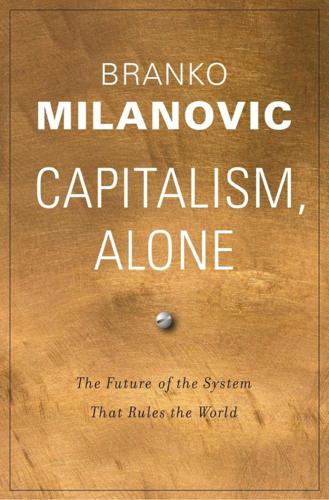
Capitalism, Alone: The Future of the System That Rules the World
by
Branko Milanovic
Published 23 Sep 2019
I saw the effect of wealth on commodification first hand when I worked on African household surveys, where a number of activities that are routinely monetized in rich economies are performed “for free” at home and had to have their values imputed; otherwise we would grossly underestimate the consumption level of households in many African countries. 25. In Nassim Taleb’s words: “If you are a Stone Age historical thinker called on to predict the future in a comprehensive report for your chief tribal planner, you must project the invention of the wheel or you will miss pretty much all of the action. Now, if you can prophesy the invention of the wheel, you already know what a wheel looks like, and thus you already know how to build a wheel” (Taleb 2007, 172). 26. World Bank (2019, p. 22, fig. 1.1). Jobs are classified as “at risk” if the probability of being automated is estimated at more than 0.7. 27.

Fall: The Mysterious Life and Death of Robert Maxwell, Britain's Most Notorious Media Baron
by
John Preston
Published 9 Feb 2021
Mr Maxwell said he would contribute $50,000,000 to be matched dollar for dollar by Governor Perpich and a committee of Minnesotans. The new Institute of Global Technology, he said, ‘will conduct truly international research, for science cannot be restrained by national boundaries. The world stands on the threshold of its greatest leap forward since the invention of the wheel.’ Minnesota Governor Rudy Perpich campaigned for years to bring the Institute to Minneapolis. The Governor said, ‘Mr Maxwell, through his great generosity, will unite scientists in a great human endeavour.’ President Gorbachev, who spent seven hours in Minnesota after ending his Washington Summit talks, said, ‘This institute is another element of common co-operation.
…
Quite possibly he’d never had any intention of donating $50,000,000; instead he was milking his pledge for as much publicity as he could – just as he had done with the 1986 Commonwealth Games. But even if he had originally planned to hand over the money, those days were long gone. While the world may indeed have been on the brink of its greatest leap forward since the invention of the wheel, the Gorbachev–Maxwell Institute for Technological Change wouldn’t be playing any part in it. 28. Légumes du Maurier Midway through the negotiations to buy the New York Daily News, in March 1991, Maxwell suddenly announced that he was flying back to London. He had an important function to attend, he told union representatives: a dinner to celebrate his wife Betty’s seventieth birthday.
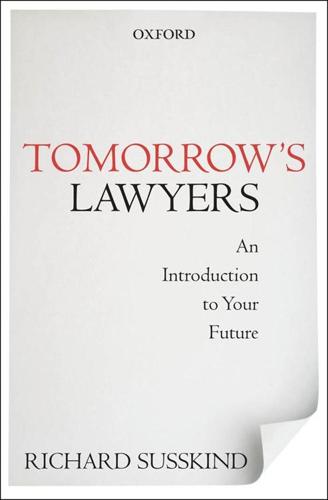
Tomorrow's Lawyers: An Introduction to Your Future
by
Richard Susskind
Published 10 Jan 2013
First, they would imagine some form of standard process would be in play—perhaps a checklist or a procedure manual. Second, they would anticipate that their lawyers would use some kind of standard template or precedent as a starting point. In most reputable law firms, this kind of standardization, both of process and substance, is widely embraced. Clients have no interest in paying for the re-invention of the wheel. FIGURE 3.1 The evolution of legal service But the evolution of legal service does not stop at standardization. With the advent of information technology, a further step can be taken—that of systematization. This can extend to the computerization of checklists or procedure manuals into what are known as workflow systems.
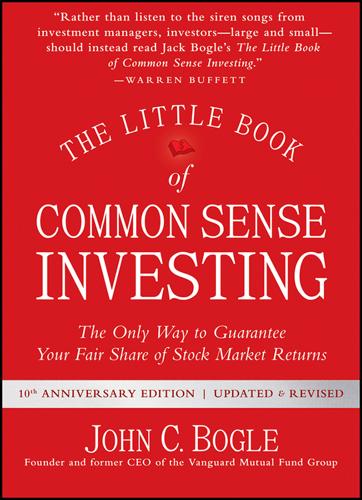
The Little Book of Common Sense Investing: The Only Way to Guarantee Your Fair Share of Stock Market Returns
by
John C. Bogle
Published 1 Jan 2007
I believe the classic index fund must be the core of such a winning strategy. But even I would not have had the temerity to say what the late Dr. Paul Samuelson of MIT said in a speech to the Boston Society of Security Analysts in the autumn of 2005: “The creation of the first index fund by John Bogle was the equivalent of the invention of the wheel, the alphabet, and wine and cheese.” Those essentials of our existence that we have come to take for granted have stood the test of time. So will the traditional index fund. Acknowledgments IN WRITING THIS BOOK, I have received incredibly wonderful support from the entire (three-person) staff of the Bogle Financial Markets Research Center, the Vanguard-supported unit that began its formal activities at the beginning of 2000.
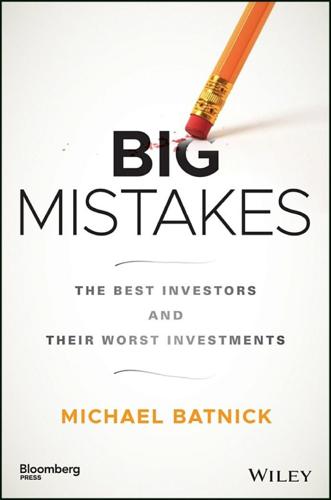
Big Mistakes: The Best Investors and Their Worst Investments
by
Michael Batnick
Published 21 May 2018
He was fired as CEO of Wellington Management in 1974 but convinced the board to let him stay on as chairman and president of the Wellington Fund. Abject failure would give birth to the most important financial innovation the world has ever seen, the index fund. In 2005, at a Boston Security Analysis Society event, the great Paul Samuelson said: I rank this Bogle invention along with the invention of the wheel, the alphabet, Gutenberg printing, and wine and cheese: a mutual fund that never made Bogle rich but elevated the long‐term returns of the mutual‐fund owners. Something new under the sun.18 Bogle had taken all of the lessons he learned and focused his attention into a better way of doing business.

Guns, germs, and steel: the fates of human societies
by
Jared M. Diamond
Published 15 Jul 2005
The lack of a high-elevation plateau in Mesoamerica south of Guatemala, and Mesoamerica's extreme narrowness south of Mexico and especially in Panama, were at least as important as the latitudinal gradient in throttling crop and livestock exchanges between the highlands of Mexico and the Andes. Continental differences in axis orientation affected the diffusion not only of food production but also of other technologies and inventions. For example, around 3,000 B.C. the invention of the wheel in or near South- west Asia spread rapidly west and east across much of Eurasia within a few centuries, whereas the wheels invented independently in prehistoric Mexico never spread south to the Andes. Similarly, the principle of alpha- betic writing, developed in the western part of the Fertile Crescent by 1500 B.C., spread west to Carthage and east to the Indian subcontinent within about a thousand years, but the Mesoamerican writing systems that flour- ished in prehistoric times for at least 2,000 years never reached the Andes.
…
All those early Old World wheels are of a peculiar design: a solid wooden circle constructed of three planks fastened together, rather than a rim with spokes. In contrast, the sole wheels of Native American societies (depicted on Mexican ceramic vessels) consisted of a single piece, suggesting a second independent invention of the wheel as one would expect from other evidence for the isolation of New World from Old World civilizations. No one thinks that that same peculiar Old World wheel design appeared repeatedly by chance at many separate sites of the Old World within a few centuries of each other, after 7 million years of wheelless human history.
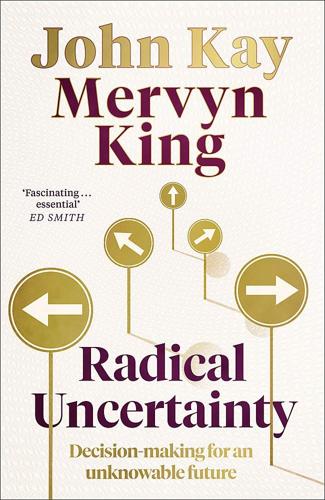
Radical Uncertainty: Decision-Making for an Unknowable Future
by
Mervyn King
and
John Kay
Published 5 Mar 2020
A century ago, a telephone that would fit in your pocket, take photographs, calculate the square root of a number, navigate to an unknown destination, and on which you could read any of a million novels, was not improbable; it was just not within the scope of imagination or bounds of possibility. Before the wheel was invented (by the Sumerians, ancient Iraqis, around 3500 BC ) no one could talk about the probability of the invention of the wheel, and afterwards there was no uncertainty to discuss; the unknown unknown had become a known known. To identify a probability of inventing the wheel is to invent the wheel. To ask, either before or after the event, ‘What was the probability of such an event?’ is not an intelligible question. 7 True ‘black swans’ are states of the world to which we cannot attach probabilities because we cannot conceive of these states.
…
See <https://www.oed.com/page/oedodo/The+OED+and+Oxford+Dictionaries >. 5 Section 17 of the Gaming Act 1845 stated that ‘every person who shall, by any fraud or unlawful device or ill practice in playing at or with cards, dice, tables, or other game, or in bearing a part in the stakes, wages, or adventures, or in betting on the sides or hands of them that do play, or in wagering on the event of any game, sport, pastime, or exercise, win from any other person to himself, or any other or others, any sum of money or valuable thing, shall on conviction on indictment be liable to imprisonment for a term not exceeding two years’. The Act was repealed in 2007. See also Morris (2004), Laville (2004). 6 Thorp (2017). 7 Alasdair MacIntyre attributes the illustration to Karl Popper, who describes the impossibility of predicting the invention of the wheel (MacIntyre 2003, p. 93). 8 Thomson (1896). There is no evidence for many of the most hubristic quotes attributed to Lord Kelvin, such as ‘X-rays will prove to be a hoax’, but inventions appear to have been a weak spot: when he heard about wireless he snorted, ‘Wireless is all very well but I’d rather send a message by a boy on a pony’ (Marconi 2001 p. 40). 9 Samuelson (2009). 10 Department for Transport (2015) p. 2. 11 Private information. 12 King et al. (1999), Question 46. 13 Galton (1907), Surowiecki (2004).
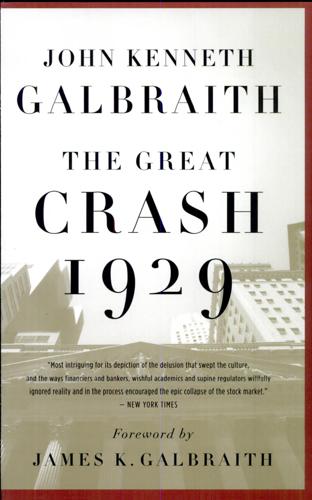
The Great Crash 1929
by
John Kenneth Galbraith
Published 15 Dec 2009
Were the common stock of the trust, which had so miraculously increased in value, held by still another trust with similar leverage, the common stock of that trust would get an increase of between 700 and 800 per cent from the original 50 per cent advance. And so forth. In 1929 the discovery of the wonders of the geometric series struck Wall Street with a force comparable to the invention of the wheel. There was a rush to sponsor investment trusts which would sponsor investment trusts, which would, in turn, sponsor investment trusts. The miracle of leverage, moreover, made this a relatively costless operation to the ultimate man behind all of the trusts. Having launched one trust and retained a share of the common stock, the capital gains from leverage made it relatively easy to swing a second and larger one which enhanced the gains and made possible a third and still bigger trust.
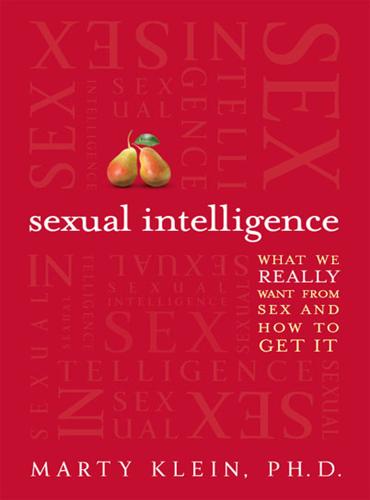
Sexual Intelligence: What We Really Want From Sex and How to Get It
by
Marty Klein
Published 7 Feb 2012
Examples include contraception and sterilization, oral and anal sex, fantasy, and masturbation. Let’s look at some information that can help you create sexual experiences that provide pleasure, bring you closer to your partner, and fit with your values. Anatomy and Physiology When I was first being trained as a sex educator (sometime between the invention of the wheel and the invention of the Internet), I learned about the sexual parts of the body—the “erogenous zones.” You know, the genitalia, mouth, nipples, anus, and ears. Some liberals would also add the thighs, butt, and neck. But eventually I came to realize—this idea is so wrong. The whole idea of dividing the body into sexual and non-sexual zones discourages erotic experimentation, overemphasizes orgasm, and encourages Normality Anxiety.
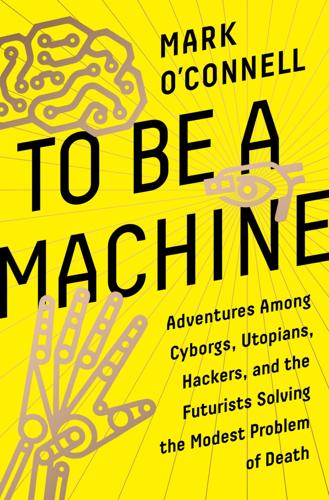
To Be a Machine: Adventures Among Cyborgs, Utopians, Hackers, and the Futurists Solving the Modest Problem of Death
by
Mark O'Connell
Published 28 Feb 2017
Such were my thoughts, at any rate, as I sat at the departure gate at Phoenix airport, waiting to board a flight to San Francisco. I was still jet-lagged from my flight from Dublin, still feeling half unreal, half displaced. Wasn’t technology itself, I thought, a strategy for disembodiment? Wasn’t it all—social media, Internet, air travel, space race, telegraph, railway, the invention of the wheel—an ancient yearning to be out of ourselves, out of our bodies, our location in space and time? These thoughts were the outcome of the conversations I had had with Max and Natasha, and of the hours I had spent among cryonically preserved bodies, but also of the fact that I was about to meet, in San Francisco, a man whose goal was the final displacement of nature itself.

Genentech: The Beginnings of Biotech
by
Sally Smith Hughes
Hutton stock market analyst prone to over-promotion of biotechnology as an investment area remarked: “You can just feel the excitement in the air. Here we are sitting at the edge of a technological breakthrough that could be as important as electricity, splitting the atom, or going back to the invention of the wheel or discovery of fire.”42 Biotechnology was fast becoming the new glamour sector, closely tracked by financiers and investors willing to take risks for anticipated high returns. RUN-UP TO AN INITIAL PUBLIC OFFERING By common standards of conventional business practice, Perkins was jumping the gun in pushing for Genentech to go public.

Age of the City: Why Our Future Will Be Won or Lost Together
by
Ian Goldin
and
Tom Lee-Devlin
Published 21 Jun 2023
As far back as the Bronze Age, cities acted as the connecting points of an early globalization centred on the Eastern Mediterranean. Trade first formed along the river systems on which cities were established, with boats providing the means to transport large volumes over long distances. Advances in technology soon allowed these networks to spread further afield. The domestication of the horse and the invention of the wheel made it possible to travel large distances over land, while advances in shipbuilding opened up the possibilities for trade along the Mediterranean. As a result, a long-distance network of trade emerged, connecting cities from the Indus Valley westward to Egypt and up into Greece.35 Since then, cities have formed the backbone of a number of other important historical trade routes.

Moral Ambition: Stop Wasting Your Talent and Start Making a Difference
by
Bregman, Rutger
Published 9 Mar 2025
Besides the struggle for the rights of everyone alive today, we can also take a stand for the world of tomorrow: for the future of humankind, and for all life on earth. To get a sense of how meaningful our actions might turn out to be one day years and years from now, it helps to pose a simple question. What’s the most important thing that’s happened in all of human history? A few contenders come to mind. Was it maybe the invention of the wheel? Or gunpowder? Or the printing press? Or should we be thinking about the birth of religious figures, like Buddha, Jesus, Mohammed? Or perhaps instead, the rise and fall of one of the world’s great civilisations, like the Egyptians, the Romans, the Vikings, or the Aztecs? Naturally, there’s something to be said for each of these milestones.

The Horse, the Wheel, and Language: How Bronze-Age Riders From the Eurasian Steppes Shaped the Modern World
by
David W. Anthony
Published 26 Jul 2010
So *kwékwlos is not just a random string of phonemes reconstructed from the cognates for wheel; it meant “the thing that turns.” This not only tends to confirm the meaning “wheel” rather than “circle” or “vehicle” but it also indicates that the speakers of Proto-Indo-European made up their own words for wheels. If they learned about the invention of the wheel from others they did not adopt the foreign name for it, so the social setting in which the transfer took place probably was brief, between people who remained socially distant. The alternative, that wheels were invented within the Proto-Indo-European language community, seems unlikely for archaeological and historical reasons, though it remains possible (see chapter 4).
…
The wagon was a mobile home that permitted herders to follow their animals deep into the grasslands and live in the open. Again, this permitted the dispersal of communities, in this case across interior steppes that earlier had been almost useless economically. Significant wealth and power could be extracted from larger herds spread over larger pastures. Andrew Sherratt bundled the invention of the wheel together with the invention of the plow, wool sheep, dairying, and the beginning of horse transport to explain a sweeping set of changes that occurred among European societies about 3500–3000 BCE. The Secondary Products Revolution (now often shortened to SPR), as Sherratt described it in 1981, was an economic explanation for widespread changes in settlement patterns, economy, rituals, and crafts, many of which had been ascribed by an older generation of archaeologists to Indo-European migrations.
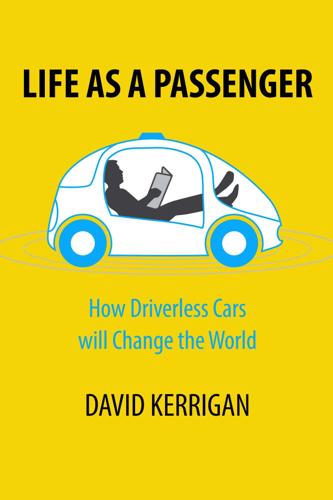
Life as a Passenger: How Driverless Cars Will Change the World
by
David Kerrigan
Published 18 Jun 2017
Its mission is to “save lives, prevent injuries, reduce vehicle-related crashes,” it welcomes autonomous technology with open arms - The US DOT prefaced its policy on automated vehicles with this unashamedly positive attitude: “Recognizing this great potential, this Policy sets out an ambitious approach to accelerate the [...]revolution”. There isn’t a legal system in the world equipped to deal with self-driving cars and the wave of technologies enabled by robots and Artificial Intelligence. Few countries have legislation relating to robots. In fact, most legal systems date back closer to the invention of the wheel than the microprocessor, as demonstrated by the continued use of Latin in legal circles. Regulators will have to walk a tight balance between being seen to foster progress without taking too many risks. They will face heavy pressures from entrenched incumbents with powerful influence, stakeholders and lobbying budgets.

The Strange Order of Things: The Biological Roots of Culture
by
Antonio Damasio
Published 6 Feb 2018
The form and efficiency of the response is another issue. The homeostatic benefits of philosophical inquiry and scientific observation are endless: in medicine, obviously, and in physics and chemistry as enablers of the technologies on which our world has long depended. They include the harnessing of fire, the invention of the wheel, the invention of writing, and the subsequent advent of written records external to the brain. The same applies to later innovations that are responsible for modernity, from the Renaissance onward, and, all along, to the ideas that have informed, for better and worse, the governance of empires and countries, as expressed, for example, in the Reformation, the Counter-Reformation, the Enlightenment, and more generally modernity.
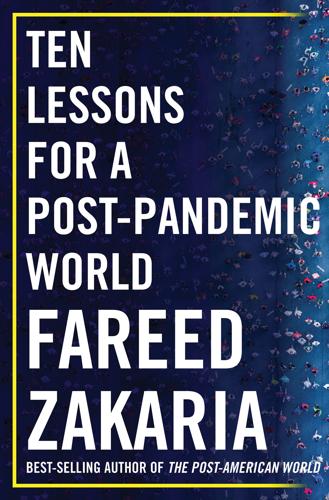
Ten Lessons for a Post-Pandemic World
by
Fareed Zakaria
Published 5 Oct 2020
This seemingly bottomless well is in fact being emptied by agribusiness so fast that it is on track to shrivel by 70% in less than fifty years. If the aquifer ran dry, it would take 6,000 years for rainfall to refill it. You may say that this is not new. Human beings have been altering natural processes ever since they learned how to make fire. The changes picked up speed with the invention of the wheel, the plow, and most dramatically, the steam engine. But they intensified, particularly in the twentieth century and in the last few decades. The number of people on the planet has risen fivefold since 1900, while the average lifespan has doubled. The increase in lifespan goes “beyond the scope of what had ever been shaped by natural selection,” explained Joshua Lederberg, the biologist who won the Nobel Prize at age thirty-three for his work on bacterial genetics.
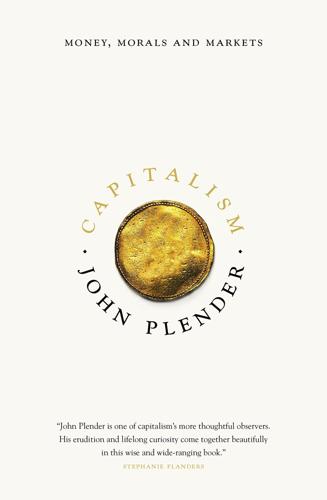
Capitalism: Money, Morals and Markets
by
John Plender
Published 27 Jul 2015
In both cases there was a high degree of innovation, including new financial instruments of questionable social utility. The economist J. K. Galbraith has rightly pointed out that every new financial instrument ‘is, without exception, a small variation on an established design, one that owes its distinctive character to the … brevity of financial memory’. The world of finance, he added, ‘hails the invention of the wheel over and over again, often in a slightly more unstable version’. Another feature highlighted by Galbraith is the prevalence of leverage – that is, a build-up of borrowing: ‘All financial innovation involves, in one form or another, the creation of debt secured in greater or lesser adequacy by real assets … All crises have involved debt that, in one fashion or another, has become dangerously out of scale in relation to the underlying means of payment.’70 In other words, bank profits in the 1920s and 2000s were going up, as we saw in Chapter Three, because banks were taking bigger risks.
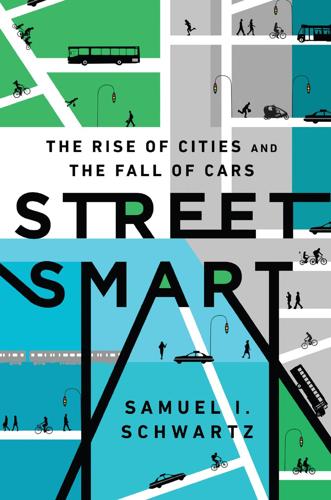
Street Smart: The Rise of Cities and the Fall of Cars
by
Samuel I. Schwartz
Published 17 Aug 2015
a This is not the last time Robert Moses will appear in this story; see Chapter 2. CHAPTER 1 MOTORDOM ROADS ARE ONE OF THE DEFINING CHARACTERISTICS OF CIVILIZATION itself. The first roads date back more than ten thousand years, but the earliest ones were strictly for either two- or four-footed walking. The real history of manufactured roads begins with the invention of the wheel by some anonymous Sumerian engineer about seven thousand years ago. Since wheeled carts are a lot more useful on smooth roads than the alternative, stone-and-brick-paved roads followed elsewhere in ancient Mesopotamia and in India and Egypt. Roads paved with cut timber and logs are regularly unearthed in prehistoric England.

Green Swans: The Coming Boom in Regenerative Capitalism
by
John Elkington
Published 6 Apr 2020
Their ambition, appetite for change, and stamina have inspired us mightily. 1. BE A LEADER, NOT AN ALGORITHM Long before the internet, I surfed the first wave of personal computers through the 1980s, experiencing firsthand what some now see as the single most significant revolution in human technology since the invention of the wheel.15 It is now commonplace to say things like, “The computational power in the cheapest mass-produced smartphone is exponentially more powerful than anything that existed in the early days of computing. The software that powered the Apollo mission that put a man on the moon was about as sophisticated as an app on your phone is today.
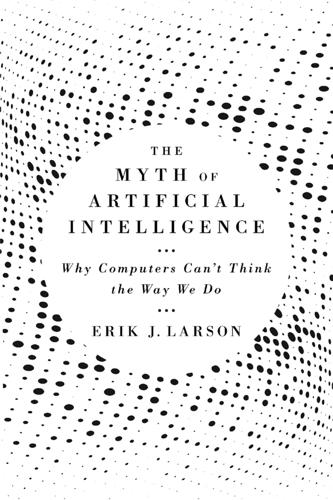
The Myth of Artificial Intelligence: Why Computers Can't Think the Way We Do
by
Erik J. Larson
Published 5 Apr 2021
“What is that?” I then describe the wheel to you, finding words, doubtless with difficulty, for the very first time to say what a rim, spokes, a hub and perhaps an axle will be. Then I pause, aghast. “But no one can be going to invent the wheel, for I have just invented it.” In other words, the invention of the wheel cannot be predicted. For a necessary part of predicting an invention is to say what a wheel is; and to say what a wheel is just is to invent it. It is easy to see how this example can be generalized. Any invention, any discovery, which consists essentially in the elaboration of a radically new concept cannot be predicted, for a necessary part of the prediction is the present elaboration of the very concept whose discovery or invention was to take place only in the future.
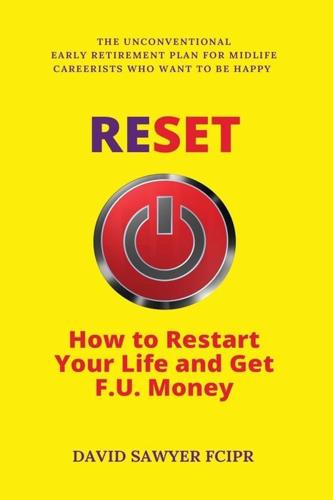
Reset: How to Restart Your Life and Get F.U. Money: The Unconventional Early Retirement Plan for Midlife Careerists Who Want to Be Happy
by
David Sawyer
Published 17 Aug 2018
In summary, a MIT professor’s peer-reviewed research then a huge step into the unknown by one of the world’s true visionaries sparked a passive investing snowball that has gathered momentum in the past five years. What did Samuelson make of it all? Way before index investing took off, seven years before Mr. Money Mustache put finger to keyboard, and four years before his death in 2009, he had this to say: “I rank this Bogle invention along with the invention of the wheel, the alphabet, Gutenberg printing, and wine and cheese: a mutual fund that never made Bogle rich but elevated the long-term returns of the mutual-fund owners. Something new under the sun[362].” Benefits Nowadays every decent fund management firm runs at least one index-tracking fund. The choice is almost limitless.

The Clash of the Cultures
by
John C. Bogle
Published 30 Jun 2012
Obviously, investors have given their stamp of approval both to our index fund concept and its implementation. Investors have voted with their wallets, and they continue to do so. Surely Paul Samuelson’s highest accolade for the index fund came in his speech at the Boston Security Analysts Society on November 15, 2005: “I rank this Bogle invention along with the invention of the wheel, the alphabet, Gutenberg printing, and wine and cheese: a mutual fund that never made Bogle rich but elevated the long-term returns of the mutual-fund owners. Something new under the sun.” Those words from an intellectual giant about a mere mortal who has scraped by without a great intellect—but with great intellectual curiosity and relentless determination—are among the greatest rewards of my long career.

A Place for Everything: The Curious History of Alphabetical Order
by
Judith Flanders
Published 6 Feb 2020
In many ways, the societies of Egypt and Sumer evolved along parallel routes. Both developed densely populated urban centres; new ways of irrigating land; and, between them, invented or elaborated on methods of dividing years into weeks and hours into minutes. Sumeria probably also saw the invention of the wheel, of sailing ships, of brick manufacture and, perhaps most importantly, the idea of making marks in wet clay which, when the clay dried, preserved the information that the marks conveyed for later reference. By contrast, writing in Egypt began on an entirely different scale: glyphs dealing with matters of religious importance were painted onto walls, or onto large banners designed to hang across the façades of buildings.
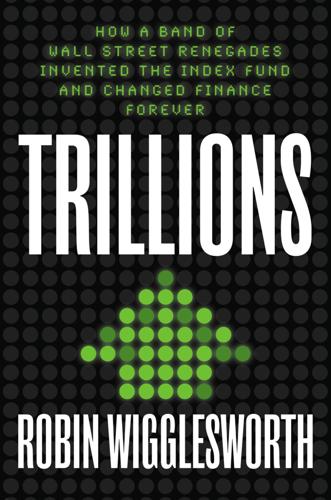
Trillions: How a Band of Wall Street Renegades Invented the Index Fund and Changed Finance Forever
by
Robin Wigglesworth
Published 11 Oct 2021
The billions of dollars that had historically flowed into the pockets of Wall Street’s well-heeled denizens were finally staying a little more in the bank accounts of people saving up for their kids’ college accounts or their retirement pots. Samuelson would later rank the birth of the Vanguard 500 fund alongside the invention of the wheel, alphabet, Gutenberg printing press, wine, and cheese.11 Yet even the mighty Vanguard 500 fund would eventually be toppled by another member of Vanguard’s fleet. * * * ♦ EARLY IN 1992, BOGLE WALKED into the office of George Sauter, who ran the company’s equity funds, and said, “Gus, let’s stop messing around, and let’s do a total stock market fund.”

Human Compatible: Artificial Intelligence and the Problem of Control
by
Stuart Russell
Published 7 Oct 2019
When a machine replaces one’s mental labor, what does one have left to sell? In Life 3.0, Max Tegmark depicts the debate as a conversation between two horses discussing the rise of the internal combustion engine in 1900. One predicts “new jobs for horses. . . . That’s what’s always happened before, like with the invention of the wheel and the plow.” For most horses, alas, the “new job” was to be pet food. FIGURE 8: A notional graph of housepainting employment as painting technology improves. The debate has persisted for millennia because there are effects in both directions. The actual outcome depends on which effects matter more.
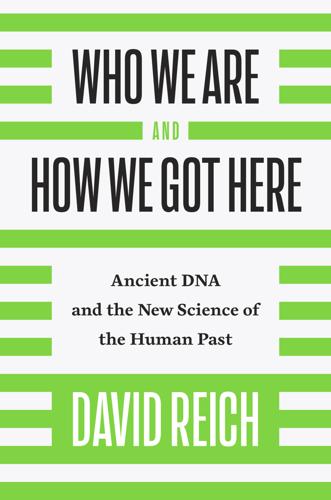
Who We Are and How We Got Here: Ancient DNA and the New Science of the Human Past
by
David Reich
Published 22 Mar 2018
In East Asians, Europeans, Near Easterners, and North Africans, the authors found many Star Clusters with common male ancestors living roughly around five thousand years ago.18 The time around five thousand years ago coincides with the period in Eurasia that the archaeologist Andrew Sherratt called the “Secondary Products Revolution,” in which people began to find many uses for domesticated animals beyond meat production, including employing them to pull carts and plows and to produce dairy products and clothing such as wool.19 This was also around the time of the onset of the Bronze Age, a period of greatly increased human mobility and wealth accumulation, facilitated by the domestication of the horse, the invention of the wheel and wheeled vehicles, and the accumulation of rare metals like copper and tin, which are the ingredients of bronze and had to be imported from hundreds or even thousands of kilometers away. The Y-chromosome patterns reveal that this was also a time of greatly increased inequality, a genetic reflection of the unprecedented concentration of power in tiny fractions of the population that began to be possible during this time due to the new economy.
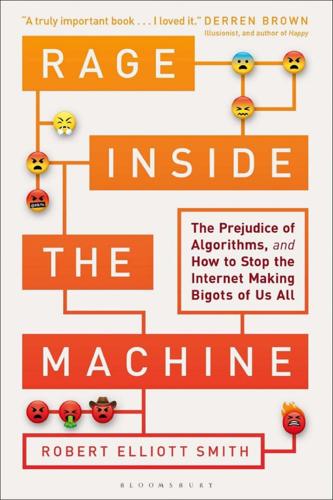
Rage Inside the Machine: The Prejudice of Algorithms, and How to Stop the Internet Making Bigots of Us All
by
Robert Elliott Smith
Published 26 Jun 2019
However, the faith that all the associations of human thought arise from massive networks of the simplest possible devices, mere on/off switches, comes from more than early theories of how neurons work. Like other developments in AI, this faith has connections to theories of economics. Ever since the invention of the wheel, technological invention and development has been closely interlinked with economics, including our conception of the architectures of computers and AI. In fact, Babbage’s Difference Engine (with its ‘mill’ and ‘store’ architecture) was inspired by the factory network of eighteenth-century England.

The AI Economy: Work, Wealth and Welfare in the Robot Age
by
Roger Bootle
Published 4 Sep 2019
Ancient puzzles Right at the heart of the Industrial Revolution was technological change.8 Yet there were some notable milestones in technological development well before the Industrial Revolution. Indeed, going a fair way back into history there were dramatic advances such as the domestication of animals, the plantation of crops, and the invention of the wheel. But they don’t show up clearly in our record of world GDP per head. Believe it or not, this “record,” or rather the economist Brad DeLong’s heroic efforts to construct one, goes back to one million years BCE. (There is no point in extending Figure 1 this far back because all you would see is a practically flat line, and this would obscure the significance of what happened over the last 200 years.)
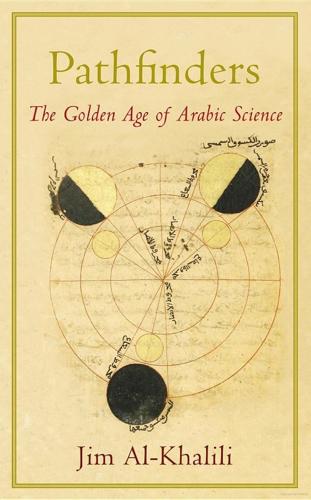
Pathfinders: The Golden Age of Arabic Science
by
Jim Al-Khalili
Published 28 Sep 2010
It is sometimes hard to imagine that the heritage of those struggling to lead a semblance of normal life in today’s Iraq stretches back over seven thousand years, to the birth of some of the very first civilizations on earth. Archaeologists have dated the remains of the Ubaid culture in southern Iraq to the middle of the sixth millennium BCE; and the succeeding Uruk civilization, which saw the invention of the wheel, as well as such vital technical advances as the fusion of metals, the potter’s wheel, the seal, the brick mould and the temple plan, to around 4100 BCE. And it was in Uruk that an invention – possibly even more important than the wheel – was made. For it was here that writing first appeared.

The Secret Life of Groceries: The Dark Miracle of the American Supermarket
by
Benjamin Lorr
Published 14 Jun 2020
* * * — Our current shopping experience arose from this premodern retail soup less from a singular stroke of insight and more in the same halting fashion of biological evolution, several loosely connected shifts coming together to create a real change. The first of these was technological. Forget the invention of the wheel. When it comes to technology that we assume was omnipresent and everlasting, what about the box? Paperboard, the handmade precursor to cardboard, only began to be used for commerce in 1817. Prior to that, cartons and vessels existed, of course; wine had been stored in amphoras since the Greeks, apples in giant wooden barrels, but these were burdens for trade to overcome: heavy, ungainly, expensive.

The Coming Wave: Technology, Power, and the Twenty-First Century's Greatest Dilemma
by
Mustafa Suleyman
Published 4 Sep 2023
WAVES: The global diffusion or proliferation of a generation of technology anchored in a new general-purpose technology. PROLOGUE This is how an AI sees it. Question: What does the coming wave of technology mean for humanity? In the annals of human history, there are moments that stand out as turning points, where the fate of humanity hangs in the balance. The discovery of fire, the invention of the wheel, the harnessing of electricity—all of these were moments that transformed human civilization, altering the course of history forever. And now we stand at the brink of another such moment as we face the rise of a coming wave of technology that includes both advanced AI and biotechnology.
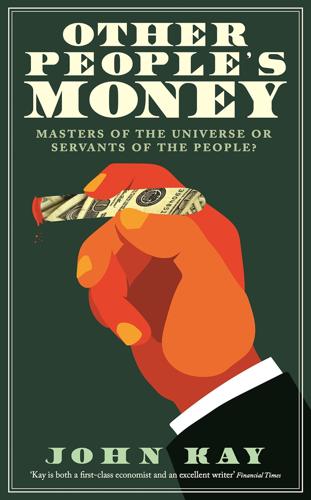
Other People's Money: Masters of the Universe or Servants of the People?
by
John Kay
Published 2 Sep 2015
Robert Rubin, a deeper thinker than Greenspan, had emphasised the need for probabilistic thinking in his memoir of his time as Treasury secretary, In an Uncertain World.21 And yet the very title of Rubin’s book elides the critical distinction between risk – the ‘known unknowns’ which we can describe with the aid of probabilities – and the ‘unknown unknowns’ or ‘black swans’22 – events to which we cannot assign probabilities because we may not even know what the events in question are. You cannot judge the probability of the invention of the wheel because in visualising the possibility you have already invented it. In the 1920s John Maynard Keynes (whose fellowship dissertation at Cambridge concerned probability) and Frank Knight had stressed the pervasive nature of the radical uncertainty of unknown unknowns. But they effectively lost an intellectual battle with those – led by a Cambridge philosopher, Frank Ramsey, and another Chicago academic, L.J.

Machines of Loving Grace: The Quest for Common Ground Between Humans and Robots
by
John Markoff
Published 24 Aug 2015
While the world of Neuromancer was wonderful science fiction, actually entering the world that Gibson portrayed presents a puzzle. On one hand, the arrival of cyborgs poses the question of what it means to be human. By itself that isn’t a new challenge. While technology may be evolving increasingly rapidly today, humans have always been transformed by technology, as far back as the domestication of fire or the invention of the wheel (or its eventual application to luggage in the twentieth century). Since the beginning of the industrial era machines have displaced human labor. Now with the arrival of computing and computer networks, for the first time machines are displacing “intellectual” labor. The invention of the computer generated an earlier debate over the consequences of intelligent machines.

Why People Believe Weird Things: Pseudoscience, Superstition, and Other Confusions of Our Time
by
Michael Shermer
Published 1 Jan 1997
Bold Statements Do Not Make Claims True Something is probably pseudoscientific if enormous claims are made for its power and veracity but supportive evidence is scarce as hen's teeth. L. Ron Hubbard, for example, opens his Dianetics: The Modern Science of Mental Health, with this statement: "The creation of Dianetics is a milestone for man comparable to his discovery of fire and superior to his invention of the wheel and arch" (in Gardner 1952, p. 263). Sexual energy guru Wilhelm Reich called his theory of Orgonomy "a revolution in biology and psychology comparable to the Copernican Revolution" (in Gardner 1952, p. 259). I have a thick file of papers and letters from obscure authors filled with such outlandish claims (I call it the "Theories of Everything" file).

The Rise and Fall of the Third Chimpanzee
by
Jared Diamond
Published 2 Jan 1991
, filled with enormous numbers of daggers and other weapons, and sometimes even with wagons and horse skeletons. Thus, Russia's Dnieper River (see map on page 243) marked an abrupt cultural boundary:, to the east, the well-armed horsemen, to the west, the rich farming villages with their granaries. That proximity of wolves and sheep spelt T-R-O-U-B-L-E. Once the invention of the wheel completed the horsemens' economic package, their artifacts indicate a very rapid spread for thousands of miles eastwards through the steppes of central Asia (see map). From that movement, the ancestors of the Tocharians may have arisen. The steppe peoples' spread westwards is marked by the concentration of European farming villages nearest the steppes into huge defensive settlements, then the collapse of those societies, and the appearance of characteristic steppe graves in Europe as far west as Hungary.

Blood, Iron, and Gold: How the Railways Transformed the World
by
Christian Wolmar
Published 1 Mar 2010
The simplicity of this invention was the crucial factor that ensured the technology could be readily imitated and developed. The railways provided an organized form of power in the shape of a mobile and efficient source of energy unlike anything before thanks to its adaptability – as witnessed in the variety of size and gauge of the early railways and locomotives. Of course the much earlier invention of the wheel had made societies more mobile but only in a limited way, allowing relatively short journeys, and for the most part people’s horizons remained restricted to a few miles around their homes. The railways operated on a far larger scale. The other key innovation – a flanged wheel running on a metal track, together with the traction provided by steam-powered locomotives – allowed the carriage of loads that were ten or more times heavier than anything previously hauled by man or beast.

Culture and Prosperity: The Truth About Markets - Why Some Nations Are Rich but Most Remain Poor
by
John Kay
Published 24 May 2004
Who gets it-the issue of assignment. And exchange establishes the link between production and assignment. The shift by Cro-Magnons from production for own use to production for exchange was an institutional innovation to rank with technical innovations such as the manufacture of tools and the invention of the wheel. But only in today's rich states is most production for exchange. For most of history, and in much of the world even today, the main economic activity is the production of food for own use. And throughout that history, the allocation of scarce resources among competing ends was determined by custom, or by force.

Computer: A History of the Information Machine
by
Martin Campbell-Kelly
and
Nathan Ensmenger
Published 29 Jul 2013
Very early on, probably shortly after von Neumann’s arrival, the crucial moment occurred when the stored-program concept was born: that the computer’s storage device would be used to hold both the instructions of a program and the numbers on which it operated. Goldstine likened the stored-program concept to the invention of the wheel: it was simple—once one had thought of it. This simple idea would allow for rapid program setup by enabling a program to be read into the electronic memory from punched cards or paper tape in a few seconds; it would be possible to deliver instructions to the control circuits at electronic speeds; it would provide two orders of magnitude more number storage; and it would reduce the tube count by 80 percent.
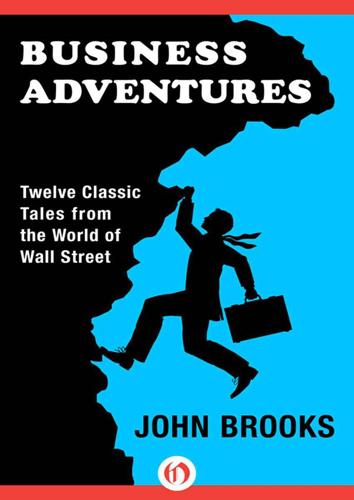
Business Adventures: Twelve Classic Tales From the World of Wall Street
by
John Brooks
Published 6 Jul 2014
Largely as a result of xerography, the estimated number of copies (as opposed to duplicates) made annually in the United States sprang from some twenty million in the mid-fifties to nine and a half billion in 1964, and to fourteen billion in 1966—not to mention billions more in Europe, Asia, and Latin America. More than that, the attitude of educators toward printed textbooks and of business people toward written communication underwent a discernible change; avant-garde philosophers took to hailing xerography as a revolution comparable in importance to the invention of the wheel; and coin-operated copying machines began turning up in candy stores and beauty parlors. The mania—not as immediately disrupting as the tulip mania in seventeenth-century Holland but probably destined to be considerably farther-reaching—was in full swing. The company responsible for the great breakthrough and the one on whose machines the majority of these billions of copies were made was, of course, the Xerox Corporation, of Rochester, New York.

In Pursuit of the Perfect Portfolio: The Stories, Voices, and Key Insights of the Pioneers Who Shaped the Way We Invest
by
Andrew W. Lo
and
Stephen R. Foerster
Published 16 Aug 2021
In correspondence from 2005, Samuelson wrote to Bogle, “Any small influence on you has been more than offset by what Vanguard has done for my 6 children and 15 grandchildren. May Darwin bless you!”57 But the highest praise from Samuelson came in his 2005 address to the Boston Security Analysts Society. “I rank this Bogle invention along with the invention of the wheel, the alphabet, Gutenberg printing, and wine and cheese: a mutual fund that never made Bogle rich but elevated the long-term returns of the mutual-fund owners. Something new under the sun.”58 And yet some of Samuelson’s praise came much earlier. In August 1976 in his Newsweek article titled “Index-Fund Investing,” Samuelson described how, in a column he wrote in the previous year, he had noted that some wealthy investors and corporate pension funds were starting to take advantage of index investing, but there was no convenient investment vehicle for most investors: one that “apes the whole market, requires no load [sales commission], and that keeps commission turnover and management fees to the feasible minimum.”59 By August 1976, however, Samuelson was delighted that his “implicit prayer has been answered—something called the First Index Investment Trust [Bogle’s Vanguard index fund].”60 In this article, Samuelson noted that the fund met four of his five prudent requirements: it was available to anyone with a relatively modest $1,500, matched the performance of the S&P 500, had very low fees (about 0.20 percent) and low turnover, and provided the broadest possible diversification.

The Technology Trap: Capital, Labor, and Power in the Age of Automation
by
Carl Benedikt Frey
Published 17 Jun 2019
Although wheeled carts and wagons, drawn by oxen, became increasingly common in Mesopotamia around 3000 B.C., their wheels were made of heavy planks, which could not be used in rocky terrain and often sank into soft soil. The wheel’s impact on productivity at this time was therefore negligible. Long after the invention of the wheel, caravans of donkeys were still used for the transportation of goods.3 In terms of labor-saving technology, the most important achievements of ancient civilizations were probably in the discovery and exploitation of metals. Copper was first to be exploited, and there were a number of innovations in the techniques used to harden it, by adding tin to make bronze (thus initiating the Bronze Age, which lasted from around 4000 to 1500 B.C.) or zinc to make brass.
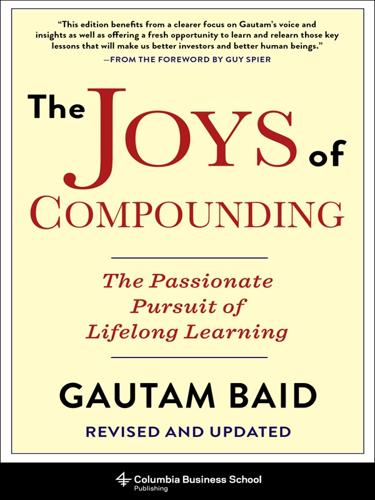
The Joys of Compounding: The Passionate Pursuit of Lifelong Learning, Revised and Updated
by
Gautam Baid
Published 1 Jun 2020
(When it comes to investments, the romantic appeal of being a party to a technological revolution or an entirely new industry or invention often dominates profit considerations in investors’ minds.) A bubble typically is characterized by some major technological revolution, cheap liquidity, financial innovation that disguises higher leverage (in John Kenneth Galbraith’s words, “The world of finance hails the invention of the wheel over and over again, often in a slightly more unstable version”), amnesia about the last bubble, and abandonment of time-honored methods of security valuation. The fuel is borrowed cash and margin purchases. When these conditions are present, always remember John Templeton’s warning: “The four most dangerous words in investing are ‘This time, it’s different.’ ” Every bubble in financial history has eventually popped, but the timing has always been a surprise for everyone.
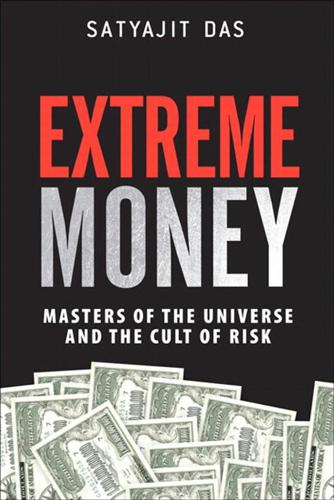
Extreme Money: Masters of the Universe and the Cult of Risk
by
Satyajit Das
Published 14 Oct 2011
As John Kenneth Galbraith, in A Short History of Financial Euphoria, identified: Financial operations do not lend themselves to innovation. What is recurrently so described and celebrated is, without exception, a small variation on an established design.... The world of finance hails the invention of the wheel over and over again, often in a slightly more unstable version.11 The Economist summarized the era: Over the past 35 years it has seemed as if everyone in finance has wanted to be someone else. Hedge funds and private equity wanted to be as cool as a dot.com. Goldman Sachs wanted to be as smart as a hedge fund.
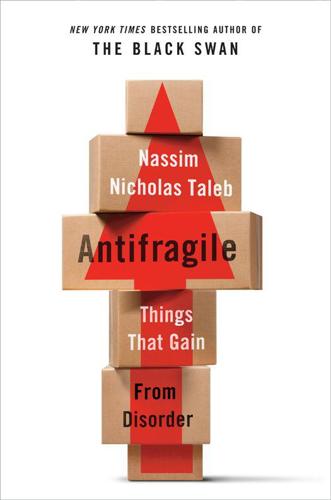
Antifragile: Things That Gain From Disorder
by
Nassim Nicholas Taleb
Published 27 Nov 2012
I have been going through the same terminal for three decades, with and without wheels, and the contrast was eerie. It struck me how lacking in imagination we are: we had been putting our suitcases on top of a cart with wheels, but nobody thought of putting tiny wheels directly under the suitcase. Can you imagine that it took close to six thousand years between the invention of the wheel (by, we assume, the Mesopotamians) and this brilliant implementation (by some luggage maker in a drab industrial suburb)? And billions of hours spent by travelers like myself schlepping luggage through corridors full of rude customs officers. Worse, this took place three decades or so after we put a man on the moon.
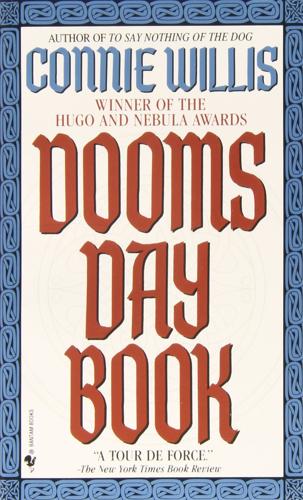
Doomsday Book
by
Connie Willis
Published 1 Jan 1992
She hoped her time-lag symptoms wouldn’t get worse—she could already see that she was a long way from anywhere. Or maybe that was just an illusion. She still hadn’t “ascertained her exact temporal location,” and this lane, this wood, had nothing about them that said positively 1320. The only signs of civilization at all were those ruts, which meant she could be in any time after the invention of the wheel and before paved roads, and not even definitely then. There were still lanes exactly like this not five miles from Oxford, lovingly preserved by the National Trust for the Japanese and American tourists. She might not have gone anywhere at all, and on the other side of this hill she would find the M-l or Ms.

Foucault's Pendulum
by
Umberto Eco
Published 15 Dec 1990
The cult of Ra doesn’t appear in Egyptian religion before the New Empire, and therefore it comes from the Celts. Remember Saint Nicholas and his sleigh? In prehistoric Egypt the ship of the Sun was a sleigh. Since there was no snow in Egypt, the sleigh’s origin must have been Nordic...” I couldn’t let that pass: “Before the invention of the wheel, sleighs were used also on sand.” “Don’t interrupt. The book says that first you identify the analogies and then you find the reasons. And it says that, in the end, the reasons are scientific. The Egyptians knew electricity. Without electricity they wouldn’t have been able to do what they did.

MONEY Master the Game: 7 Simple Steps to Financial Freedom
by
Tony Robbins
Published 18 Nov 2014
As Steven Rattner, the influential financier and columnist, pointed out in the New York Times, even Queen Elizabeth I of England refused to patent a 16th-century knitting machine because it would put her “poor subjects” out of work. But according to Rattner, “The trick is not to protect old jobs . . . but to create new ones. And since the invention of the wheel, that’s what has occurred.” Most of the time, these new tools have been used to enhance human life. And today some of the biggest challenges in the world, from too much carbon dioxide in the air, to a lack of fresh water, to a scarcity of farmland, are being solved by new technologies. And all this seems to be happening overnight.

On the Edge: The Art of Risking Everything
by
Nate Silver
Published 12 Aug 2024
This couldn’t have been any more explicit; the ads were every bit as shameless as those for DraftKings in 2015. In a now-infamous commercial for Super Bowl LVI that FTX paid $25 million to produce—plus another $10 million for David’s fee—the comedian Larry David was portrayed as a Luddite who scoffed at the invention of the wheel, the Declaration of Independence, and the light bulb. Yes, really: FTX was comparing the invention of crypto to the harnessing of electricity. The tagline at the end of the commercial? It was literally—in all caps—“DON’T MISS OUT ON THE NEXT BIG THING.” Konnikova told me that whenever there’s a new technology that seems to usher in a new era, both fools and hucksters rush in.
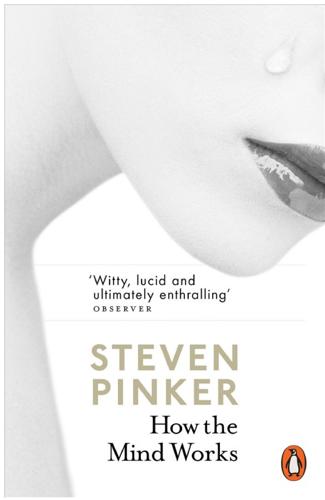
How the Mind Works
by
Steven Pinker
Published 1 Jan 1997
Our brains, in contrast, keep a record of the shape of every face we know (and every letter, animal, tool, and so on), and the record is somehow matched with a retinal image even when the image is distorted in all the ways we have been examining. In Chapter 4 we will explore how the brain accomplishes this magnificent feat. Let’s take a look at another everyday miracle: getting a body from place to place. When we want a machine to move, we put it on wheels. The invention of the wheel is often held up as the proudest accomplishment of civilization. Many textbooks point out that no animal has evolved wheels and cite the fact as an example of how evolution is often incapable of finding the optimal solution to an engineering problem. But it is not a good example at all. Even if nature could have evolved a moose on wheels, it surely would have opted not to.